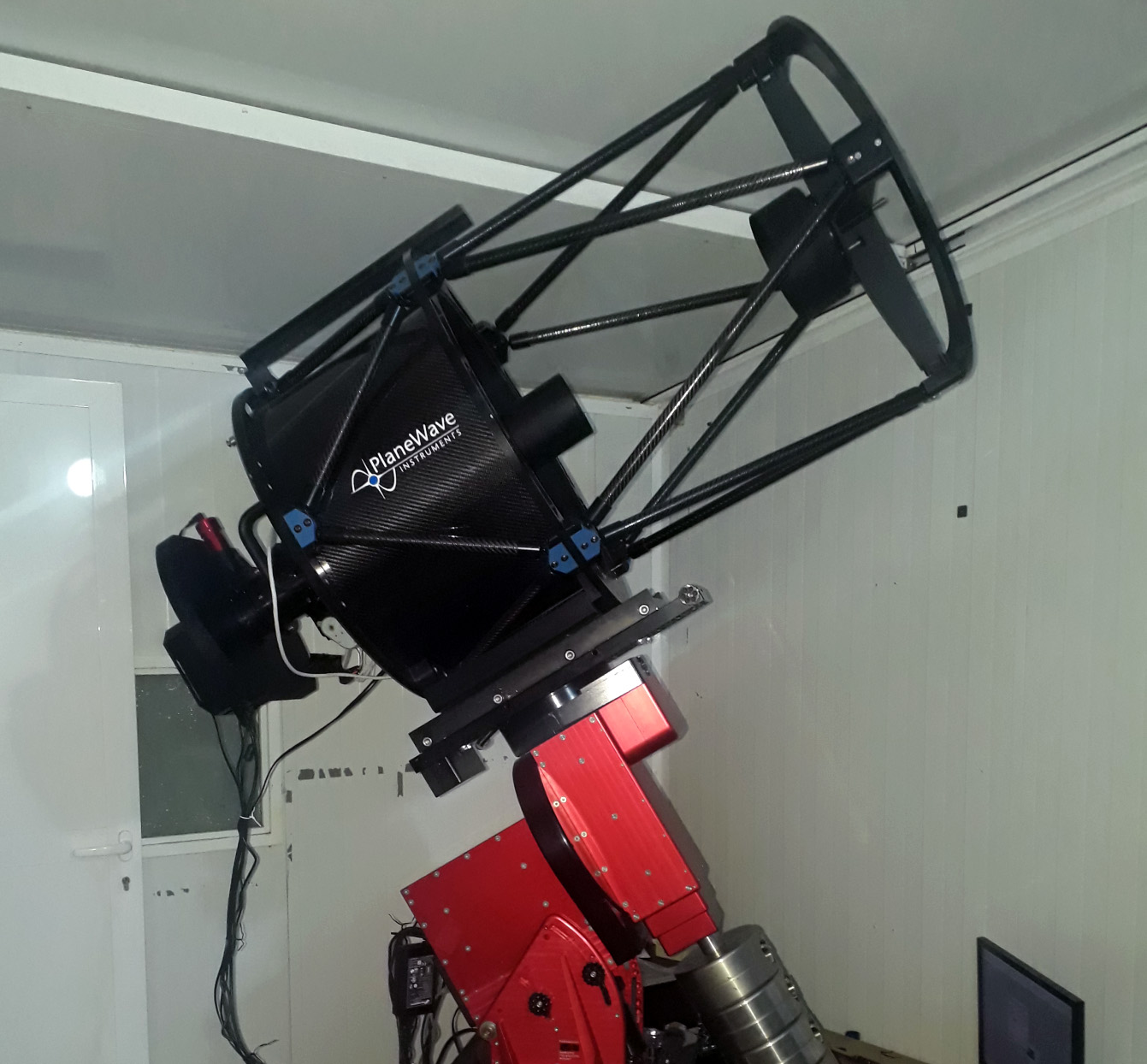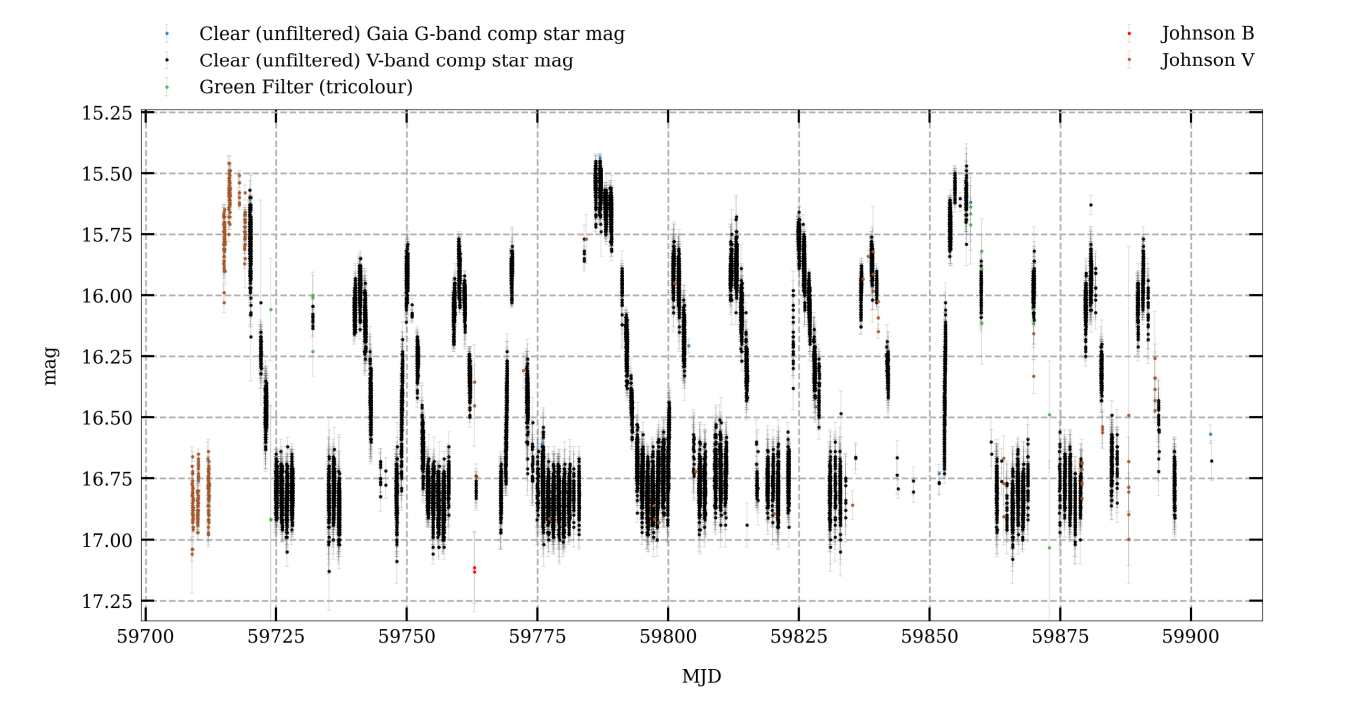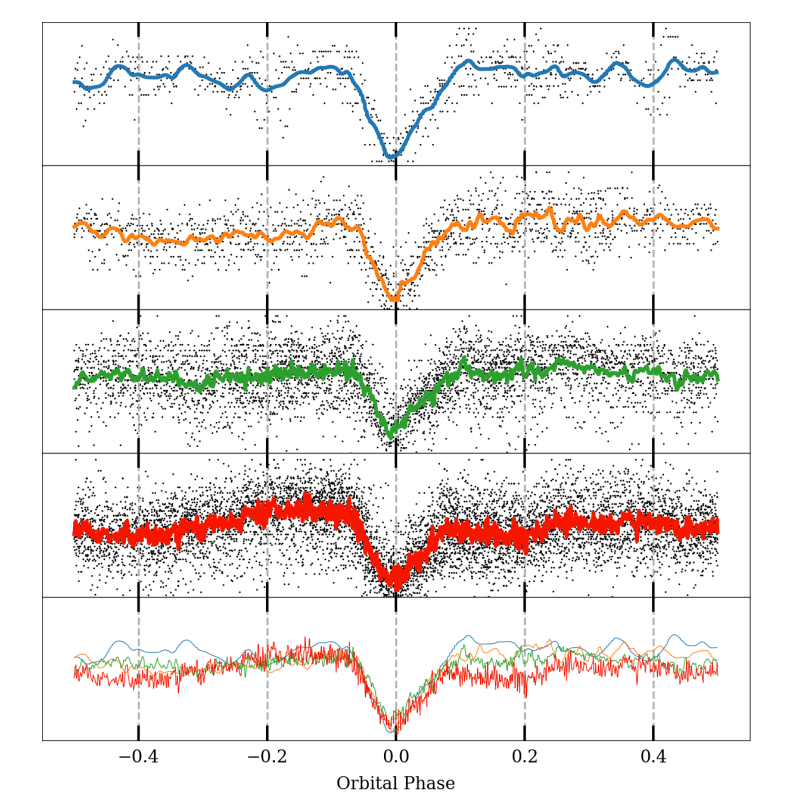Observers team up to study the enigmatic dwarf nova CG Draconis
2023 October 10
It has been said that variable-star observing is a team sport. Even though observations are made by individuals, it is only by combining the results of many observers that we get sufficient data to fully understand a particular star. Gaps in the light curve of the star can occur, because at any specific location it might not always be visible; perhaps the weather is not cooperative, or maybe the observer has other calls on their time.

Figure 1. Maxim Usatov’s 0.43m A1 telescope, a PlaneWave Corrected Dall–Kirkham (CDK) optical design equipped with the latest-generation back-illuminated Sony IMX455 sensor and located at a remote site in Spain.
For this reason, from time to time the Variable Star Section (VSS) organises intensive observing campaigns on particular targets. The fruits of such a campaign, on the dwarf nova CG Draconis, have recently been published in the journal Astronomische Nachrichten.1 AN, as it is familiarly called, was one of the first international journals in the field of astronomy. It was established in 1821 and claims to be the oldest astronomical journal in the world that is still being published. AN has a long history of publishing variable-star science, as well as other branches of astronomy. Despite its German name, which translates as ‘Astronomy Notes’, all papers are now published in English.
CG Dra has remained an enigmatic object for more than half a century. It was discovered in 1965 and was soon classified as a dwarf nova. Rather little was known about its outburst frequency until an intensive monitoring campaign was conducted by VSS observers during 2005, the results of which were published in the BAA Journal.2. This revealed that the star has frequent outbursts, every 11 days or so, and that it spends very little time at quiescence. Two types of outburst were detected: short, lasting about four days, and long, lasting about eight days. The range is magnitude 14.1 to 17.4.
A subsequent VSS paper presented evidence for very shallow (~0.16 mag) eclipses, with a duration of about 18 min.3 The times between the eclipses were consistent with an orbital period of 4h 31m 38 (±3)s.
The new AN paper presents the most extensive photometric dataset on CG Dra to date. During the VSS campaign in 2022, 27,436 photometric observations were made, including high-resolution photometry from author Usatov’s remote telescope in Spain (Figure 1). A total of 106 eclipses were recorded.
This paper summarises the new data available and provides an updated ephemeris, as well as commentary on the observed eclipse profiles. The orbital period found is 4h 31m 38 (±1)s, consistent with earlier findings. Two types of quasi-periodic outbursts are identified: normal outbursts, of ~1.25 mag amplitude, and bright outbursts, of ~ 1.5 mag.
The most intriguing finding is that the light curve (Figure 2) resembles that of the SU UMa-type dwarf novae, which have a few longer, brighter outbursts, called superoutbursts, interspersed by several normal outbursts. In SU UMa systems, superoutbursts are characterised by the presence of small modulations in the light curve known as superhumps, the period of which is very slightly longer than that of the orbit. However, no superhumps were found in the case of CG Dra. The paper goes on to discuss whether CG Dra may represent a new intermediary subtype of dwarf nova between SS Cyg-systems, which show normal outbursts, and SU UMa-type stars, or whether it provides support for superoutburst models that do not rely on eccentric accretion discs.

The unprecedentedly high-resolution photometry (30s cadence) during the VSS campaign revealed that CG Dra exhibits a variety of eclipse profiles throughout all its states (Figure 3). For example, eclipse ingress and egress phases vary from quiescence to bright outbursts, getting slightly wider as the system progresses from quiescence to the bright outburst state. This suggests that the size of the accretion disc varies with the state of the system. Eclipse depth also increases in this sequence.

We hope that observations presented in the paper will be helpful for further research. Further observations are required to fully understand the physical nature of this system and we therefore encourage others to include this star in their observational programmes.
1 Usatov M. & Shears J., Astron. Nachr., 344, e220113 (2023). The paper can also be read on arXiv at: arxiv.org/abs/2301.05870
2 Shears J., Pickard R. & Poyner G., J. Br. Astron. Assoc., 117, 22–24 (2007)
3 Shears J., et al., J. Br. Astron. Assoc., 118, 343–347 (2008)
| The British Astronomical Association supports amateur astronomers around the UK and the rest of the world. Find out more about the BAA or join us. |
